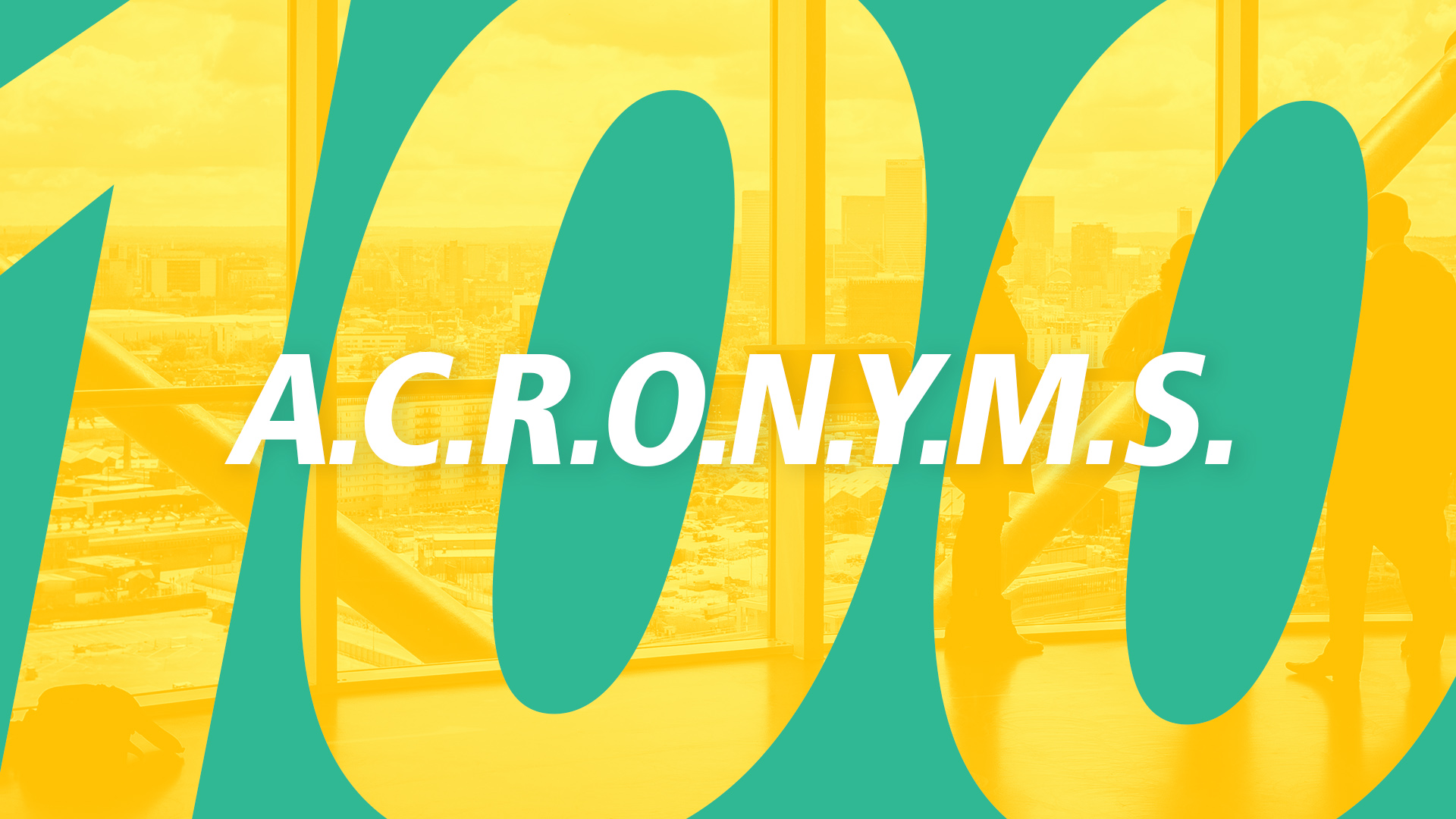“OMG, WTF are these people talking about?!” might be a sentence you mutter to yourself everyday at work. While it seems like the corporate world goes crazy over acronyms, we know how confusing it can get when these seemingly random alphabets are thrown around on a regular basis.
We’ve rounded up 100 of the most commonly used acronyms in the corporate world – split into 3 categories: business lingoes, technical terms and even job titles.
AYRFTCC: Are You Ready For The Crash Course? (not a real acronym)
BUSINESS LINGO
AAR: After Action Review
AWOL: Away Without Official Leave
COB: Close of business
In financial terms, this refers to the end of the trading day, or when trading stops.
DM: Direct message or direct mail
EOD: End of day/ End of Discussion
This is commonly referred to as the end of a work day, or literally 2359 depending on the context and the intention of the speaker. It’s good to clarify when somebody uses this for your deadline.
EOW: End of Week
EOB: End of Business
Same as COB, it could be use interchangeably
ETA: Estimated Time of Arrival
FTE: Full-time Employee
F/U: Follow-up
FY: Financial Year
FYA: For Your Action
IMO: In My Opinion
JIT :Just in Time
KIV: Keep in View
LMK: Let Me Know
OOO: Out of Office
OT: Overtime
PFA: Please Find Attached
PFB: Please Find Below
PPT: PowerPoint presentation
POC: Point of Contact
PTE: Part-time Employee
PTO: Paid Time Off
Re: Referring to
RFI: Request for Information
SME: Subject Matter Expert / Small & Medium Enterprise
SOP: Standard Operating Procedure
TAT: Turnaround Time
TBC: To Be Confirmed
TBD: To Be Decided
WEF: With Effect from
WIP: Work in Progress
WRT: With Reference to
TECHNICAL
A/C: Account
AP: Accounts Payable
AR: Accounts Receivable
B2B: Business to Business
B2C: Business to Consumer
COD: Cash on Delivery
CPU: Cost Per Unit
CMS: Content Management System
A software application or set of related programs that are used to create and manage digital content. WordPress, Squarespace or Wix are examples of CMS.
CSR: Corporate Social Responsibility
CTA: Call to Action
CRM: Customer Relationship Management
EPS: Earnings Per Share
EOS: Economies of Scale
ESP: Email Service Provider
ERP: Enterprise Resource Planning
A business management software to help a company store and manage data from every stage of business.
FOREX: Foreign Exchange
HLE: High Level Estimate
A prediction of how much a project would cost, and the amount of time it would take to complete.
IM: Instant Messaging
IPO: Initial Public Offering
ISP: Internet Service Provider
KPI: Key Performance Indicator
LLC: Limited Liability Company
LWOP: Leave Without Pay
MOU: Memorandum of Understanding
An agreement between parties which includes terms, details, requirements and responsibilities of each party involved.
MOQ: Minimum Order Quantity
MoM: Month-over-Month
MTD: Month-to-Date
NAV: Net Assets Value
NDA: Non-Disclosure Agreement
A legally binding contract between the provider and recipient of the confidential material or information – where these confidential information shall not be disclosed.
NOI: Net Operating Income
PA: Performance Appraisal
P/E: Price to Earnings Ratio
P&L: Profit and Loss
PR: Public Relations
QA: Quality Assurance
QC: Quality Control
QoQ: Quarter-over-Quarter
RSP: Retail Selling Price
R&D: Research and Development
ROI: Return on Investment
SOHO: Small Office/ Home Office
A space where you are able to live and work at, simultaneously.
SKU: Stock Keeping Unit
SLA: Service Level Agreement
SEO: Search Engine Optimisation
TT: Telegraphic Transfer
TOS: Terms of service
UI: User interface
UX: User experience
USP: Unique Selling Proposition
VAT: Value-Added Tax
VC: Venture Capital
VPN : Virtual Private network
YoY: Year-over-Year
YTD: Year-to-Date
POSITIONS & TITLES
CAO: Chief Accounting Officer
CEO: Chief Executive Officer
CFA: Chartered Financial Analyst
CFO: Chief Financial Officer
CIO: Chief Information Officer
CMO: Chief Marketing Officer
COO: Chief Operating Officer
CSO: Chief Security Officer
CTO: Chief Technology Officer
GM: General Manager
MD: Managing Director
PM: Project Manager


